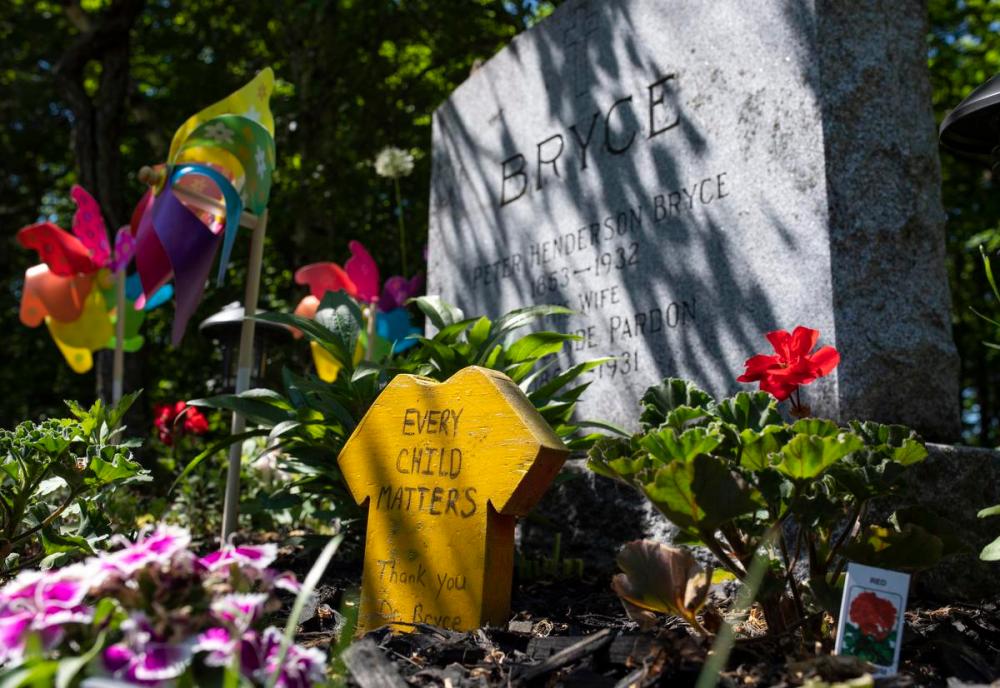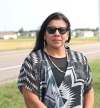Kamloops residential school discovery challenges the myth of The Good Canadian — again
Advertisement
Read this article for free:
or
Already have an account? Log in here »
To continue reading, please subscribe:
Monthly Digital Subscription
$0 for the first 4 weeks*
- Enjoy unlimited reading on winnipegfreepress.com
- Read the E-Edition, our digital replica newspaper
- Access News Break, our award-winning app
- Play interactive puzzles
*No charge for 4 weeks then price increases to the regular rate of $19.00 plus GST every four weeks. Offer available to new and qualified returning subscribers only. Cancel any time.
Monthly Digital Subscription
$4.75/week*
- Enjoy unlimited reading on winnipegfreepress.com
- Read the E-Edition, our digital replica newspaper
- Access News Break, our award-winning app
- Play interactive puzzles
*Billed as $19 plus GST every four weeks. Cancel any time.
To continue reading, please subscribe:
Add Free Press access to your Brandon Sun subscription for only an additional
$1 for the first 4 weeks*
*Your next subscription payment will increase by $1.00 and you will be charged $16.99 plus GST for four weeks. After four weeks, your payment will increase to $23.99 plus GST every four weeks.
Read unlimited articles for free today:
or
Already have an account? Log in here »
Hey there, time traveller!
This article was published 02/06/2021 (1652 days ago), so information in it may no longer be current.
Warning: This story contains details of residential schools and the abuse that took place there.
Back in 1907, federal chief medical officer Peter Henderson Bryce raised the alarm on the disastrous state of residential schools in a detailed report that was leaked to the media. The Ottawa Citizen, then called the Evening Citizen, ran a story that said:
“Suffice it to say that of the 1,537 pupils reported upon, 25 per cent are dead.”

Bryce had found a student mortality rate ranging from 25 to 69 per cent; an Indigenous child had a one-in-four chance of dying at school — if they were lucky.
The government did nothing. In the face of such difference, Bryce turned into a tireless crusader, a thorn in the government’s side who was forced out of public service.
The institutional reaction to Bryce challenges the persistent myth of The Good Canadian.
It was not just the government who was indifferent. The media, and therefore non-Indigenous people, were, too.
A 1937 story in the Star — then the Toronto Daily Star — titled “Crippled Indian girl rescued by missionary from torture” describes the rescue of six-year-old Emily, a “pitiful Cinderella of the northern reserves” suffering “another of those incredible stories of Indian cruelty.” It claims a missionary witnessed her being beaten and asked if he could take the child to eventually put her up in a residential school. The pagan family “gladly agreed.” So kind, so good, so Christian was the missionary that, “Emily tucked warmly in his sleigh, wondering with those eyes of dog-like devotion, at the kindness, so strange to her.”
It’s an unbearable read, burbling in the poison of white saviourism. I had access to it because I work here and Star librarian Astrid Lange is a fantastic researcher. I’d wager the archives of all legacy media bear witness to such malpractice.
“We didn’t know,” The Good Canadians like to say. “Those were the values of that time.”
As we see, residential school abuses were well-known, but the abuses were invisible because the victims were seen as inferior and therefore unworthy of sympathy.
If we know the story of Bryce, a white man fighting the good fight, it’s not because our media celebrated him. It’s thanks to the tireless advocacy of Gitxsan children’s rights activist Cindy Blackstock to ensure that Bryce’s sacrifices were not lost to history.
If we now know about the remains of an estimated 215 children at Kamloops Indian Residential school in British Columbia it’s because the Tk’emlúps te Secwépemc First Nation hired a specialist in ground-penetrating radar to do the work in a culturally appropriate and respectful way.
The school was operated by the Catholic church from 1890 to 1969 and then by the federal government until it closed in 1978. This included the era of Bryce’s urgings to do better.
“We know better now,” say The Good Canadians. Yet, our media — and by extension society that largely accepted its narratives — remain deniers.
Historian Ian Mosby listed on Twitter a number of stories published in the National Post in this century with “another view” of residential schools, the “two sides” of it and articles saying heck, they weren’t that bad. Not everyone was abused. It’s like saying the COVID-19 pandemic is not a disaster though it killed 25,000 Canadians because so many did not die.
It is not surprising then that, with the exception of Western Canada papers such as the Victoria Times Colonist, the Vancouver Sun and the Calgary Herald, the news from Kamloops reported by The Canadian Press took two days to register as being of vital importance in the media, and for the government to finally lower the flag at the Peace Tower in Ottawa and government buildings around the country to half-mast.
In schools that marked Orange Shirt Day this week, I wonder how many teachers talked about Canada’s wrongdoings — in the past tense.
“We were terrible back then (even while we denied being terrible back then)” is very much The Good Canadian acknowledgment. It requires no accountability.
The Really Good Canadians, however, sometimes move on to action. But “just tell us what to do” doesn’t cut it when the First Nations, Inuit and Métis have already, through commissions and inquiries, told us exactly what to do, in painstaking detail.
When in its 2015 report, Canada’s Truth and Reconciliation Commission said that the Indian residential school system amounted to cultural genocide, we clung to that word “cultural” as if it were a purgatorial label not to be confused with actual genocide, as if it wasn’t just as violent. The finding of genocide — no labels attached — came later in 2019 with the Murdered and Missing Indigenous Women and Girls inquiry and, true to our denialist DNA, we fiercely rejected it. Or at least major Canadian media did.
Settler Canadians can be more open to admitting their historical wrongs, compared to other countries. But that offers cold comfort when words, however heartfelt, don’t demand accountability.
The ability to be moved by Indigenous trauma allows us to give ourselves a pass, a moral licence, to ignore ongoing colonial atrocities in law, in land rights and in underfunding of Indigenous children in education, health care and government care. Every three days an Indigenous child connected to Ontario’s child welfare system dies, an APTN investigation found. Is the steady drip, drip of death not just as horrifying, just as inexcusable as a mass discovery?
Where is our outrage? Where are our letters flooding MPs’ offices asking the government to go beyond lowering flags and stop fighting a human rights ruling to compensate First Nations children? To stop fighting residential school survivors?
And if we continue to behave as if Indigenous children matter less than our own, how different are we really from who we’ve always been?
The Indian Residential Schools Crisis Line is available 24-hours a day for anyone experiencing pain or distress as a result of a residential school experience. Support is available at 1-866-925-4419.
Shree Paradkar is a Toronto-based columnist covering issues around race and gender for the Star. Follow her on Twitter: @ShreeParadkar



.jpg?w=100)
